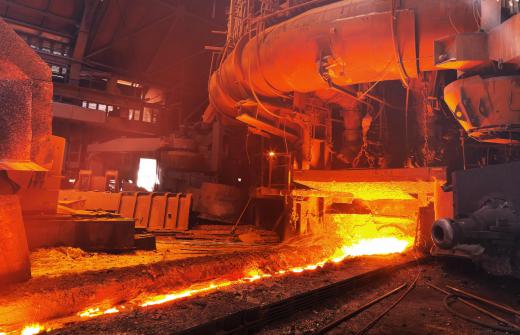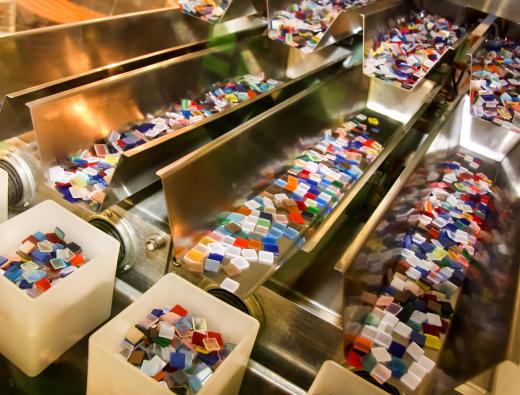At AboutMechanics, we're committed to delivering accurate, trustworthy information. Our expert-authored content is rigorously fact-checked and sourced from credible authorities. Discover how we uphold the highest standards in providing you with reliable knowledge.
What is Permanent Mold Casting?
Permanent mold casting is a process of casting metal that employs reusable, or permanent, molds. The permanent mold casting process is used in a variety of applications where a project will see mass production or duplication of the project is necessary. Although the process is more expensive than some other forms of metal casting, it is considered to be a cost-effective means of part replication for most major industries.
In most cases, permanent mold casting is done by using a two-piece mold. These molds are usually constructed of metals with high melting points, such as steel, graphite, bronze or cast iron. The two parts of the mold fit together snugly and have an opening at the top for the molten metal to enter. After cooling, the two pieces of the mold are separated, and the cast metal part is retrieved for finishing.

To start the process, the mold is preheated. This step removes any moisture that might be present in the mold and keeps the molten metal from cooling too quickly. The preheating of the permanent mold also prevents damage to the mold as a result of thermal expansion when the molten metal is introduced to it.
The process of permanent mold casting employs several means of introducing molten metals to the mold. The most common method is the use of gravity to simply pour the liquid metal into the heated mold. This method is the least expensive method of permanent mold casting because it requires less equipment, but it is not suitable for situations in which the liquid metal might not reach all areas of the mold.

In situations where the permanent mold has fine details that must be filled with molten metal, vacuum- or pressure-assisted introduction of the metal might be necessary. Low pressure is used to force the molten metal into the mold in the case of pressure-assisted permanent mold casting. For vacuum-assisted permanent mold casting, the air is pulled out of the mold, creating a low-pressure vacuum that draws the metal into the mold. In both cases, the pressurization causes the molten metal to fill the small spaces and fine details that might otherwise ruin a casting.
Another variation on the permanent mold casting process is the slush casting method. In this method, the molten metal is poured into the mold and allowed to harden around the outer edges as a shell. Once the cast metal begins to harden, the liquid metal in the center is poured off, leaving a hollow casting that is suitable for decorations and ornamental products.
AS FEATURED ON:
AS FEATURED ON:












Discuss this Article
Post your comments